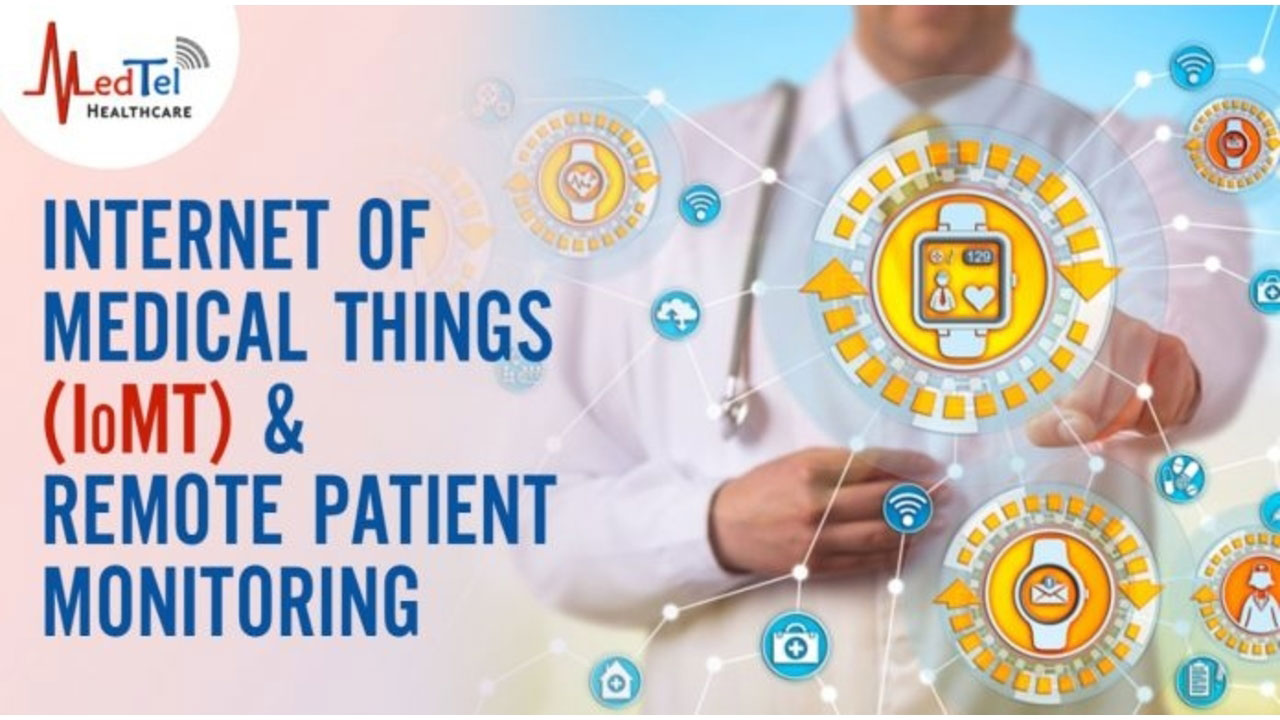Internet of Medical Things (IOMT) & Remote Patient Monitoring
Digital technologies like IoMT have incredible potential to help. The detailed analysis of growth opportunities in IoMT showcases several ways that can provide enhanced care for the patients and also control medical costs. The providers can get a clear picture of what are the factors of improvement or deterioration in a patient’s condition.
Basically, the purpose of IoMT is to get people, data, and progressions together with the help of medical devices / mobile applications and check patient’s health outcomes. The most common and useful IoMT Connected device to supervise patient’s health is Remote Patient Monitoring.
Let us see the ways as how IoMT is transforming RPM
Vital Tracking Wearables: Most of the elder population suffers from diseases like diabetes, cardiac ailments, and hypertension. Hence for cardiac patients heart monitors are vital as it monitors arrhythmia and alerts the health providers about the adverse events that may take place. Regular active monitoring and heart monitoring are achieved by some consumer wearable devices as well as Smart Watches. Also, if a patient is hospitalized, IoMT platforms help the off-campus physicians and nurses to monitor senior citizen’s signs without disturbing them.
Also Read: 5 Questions: Launching Remote Patient Monitoring
Wearables for Psychoanalysis: Psychoanalysis is expected amongst patients who have had joint replacement surgeries or stroke treatment. Such a critical phase influences the recovery process of a person and at this time utmost care must be given. Patients either stay in rehabilitation centers and this is when wearable devices come into play.
Digital Health providers gather significant details of the patient’s activity and correspond them to experts who track their progress. On the basis of the data collected, the rehab specialists suggest the continuation of the treatment and recommend different techniques.
Medicine Monitoring: Treatment is part of the process; the main challenge is to ensure that you take medication at the correct time to let your body recover. It is revealed that nearly 50% of the citizens of the US take one kind of medication and nearly 60% of the adults do not take medication on time.
With such monitoring devices, patients can be altered to take medicines on time. The modern pill dispenser connects physicians and patients through portals and through this they get notifications about medication. Overall, they also get to know about the dosage so that the patients do not miss any medicine prescribed to them.
Mental Health Monitor: Generally, college students face mental health issues. However, the apparent stigma surrounding the problems may discourage them to seek assistance. Engineers have come up with sensors as well as machine learning algorithms in order to identify extreme anxiety symptoms. This device works well with Smart Watches and gives students all the resources to relax their minds.
Also Read: Smart Health Monitoring – Revolutionising Digital Health
ECG Devices: In the present day, ECG devices are actually lifesavers. They can detect the minimalist of abnormalities in the heart. You can directly communicate with the doctors for immediate treatment. This device can also detect symptoms of ST depression, myocardial ischemia, and arrhythmia. Usually, sportsmen and athletes take advantage of these devices, so that they can tailor their training sessions according to their health condition.
Smart Pills: Smart pills are sensors that are swallowed. They can record different measures and suggests to the patients whether they have taken proper medication, dosage, and also the impact of the drug on health. Such devices ensure proper treatment and medication on time.
Disability Assistance Devices: There are several smart products available for disabilities that the elderly suffer from. With features like Bluetooth, you can connect the device with your Smartphone and keep track. One more solution for disabled seniors is Nominet’s PIPS for their daily routine. The colored buttons that are installed in elderly’s residences keep on flashing until the task is performed by the patient.
Smart Implants: Do you know what smart implants are? These are devices that help the patients to take care of their health issues and manage it properly. It ensures that medical interference is sought right away when required. Some of the common examples of smart implants are Pacemakers, OrthoSensor, or Glucose sensors. Therefore, IoMT enables health providers to witness patients remotely. This way they are spending less time asking to tell about their usual activities and more concentration are given on determining the effective treatment.
Last but not the least; IoMT and healthcare are the two sides of the same coin. They depict the connected infrastructure of devices that health providers and patients rely on. The above devices are the daily fitness tracker that today’s generation flock for. All these have become a dynamic component of every house, which brings us closer to the Internet of Medical Things (IoMT).
Wearables for RPM supervision in the health sector are not a new thing. In the year 1960, Holter monitor enabled the physicians to learn about an individual’s heart activity by sending it for a minimum of 24 hours. Such instances indicate that these devices are diverse now and are trustworthy under different circumstances.
MedTel’s RPM platform incorporates connected diagnostic devices, a smartphone app, and a web-based dashboard for hospital access and review. These devices include the digital blood pressure machine, body composition monitor, glucometer, pulse oximeter, and many more. Our advanced Connected Care Solutions manage diseases like diabetes, hypertension & obesity and endeavor timely interventions. We also provide remote pregnancy care which reduces physical clinic visits and monitors complication parameters


